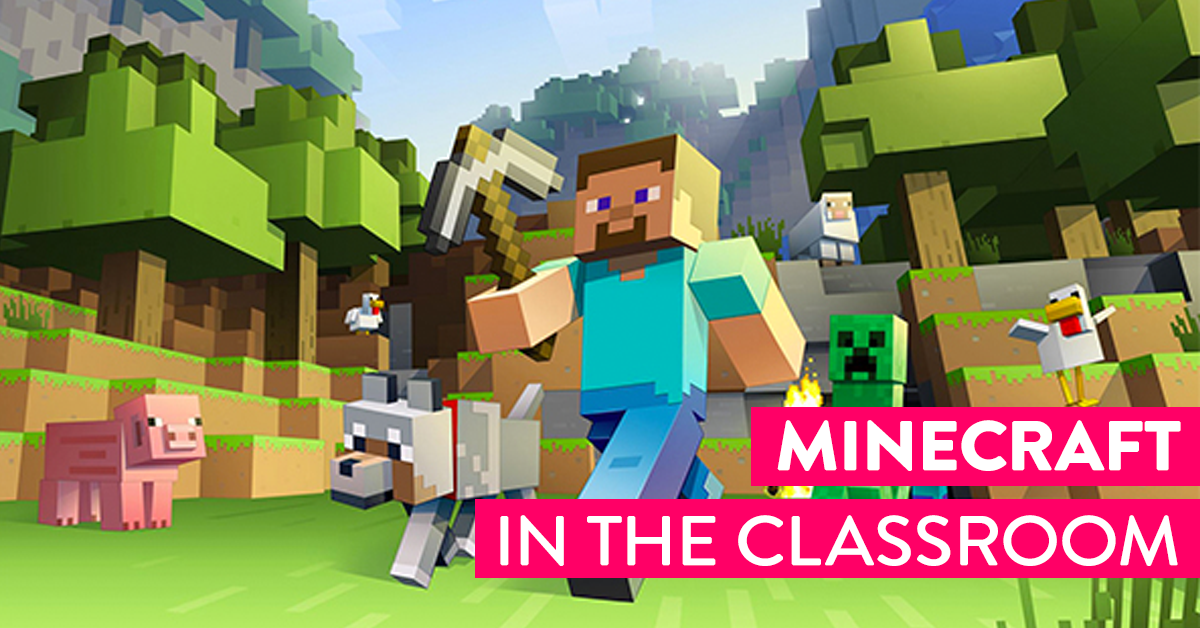One of the reasons Minecraft is so popular is because it is the ultimate multitasking experience. Minecraft is a virtual sandbox with limitless opportunities and variations. In today’s world of fast-paced communication, players are chatting, operating a character, following long-term and short-term objectives, and making quick decisions. Players are able to push their creativity and boundaries, as the game is designed to be adaptable. As you learn more about Minecraft, keep in mind that there is no “one” right way to play. Playing Minecraft can be structured, exploratory, or a combination of these.
In my opinion, Minecraft is the perfect tool to enhance your virtual and physical learning environments. As remote and distance learning prevailed during the lockdown, here are some of the tools, ideas, and takeaways of why, how, and what you can do with a focus on play and a maker mindset in your classroom.
Selecting the best Minecraft platform for you depends on your needs, school policy, and help desk support level.

Minecraft can be played in collaborative gameplay mode, meaning more than one learner can be playing within the same world at the same time. Using a single world for multiple players, or a multiplayer world, is easy with multiple hosting services offering inexpensive server options, or you can host your own Minecraft server as well. Collaborative gameplay is perfect for a whole group or small group setting within the classroom. Used in collaboration with directed-build challenges, collaborative gameplay is a great way to engage learners in virtual teamwork.
As a teacher, you also need something concrete—a framework to enhance your observation toolset—to make sure that you are noticing the important things happening in your classroom. Agency by Desing offers the perfect tools, like the inquiry cycle.

When using Minecraft in the classroom, one feature that can be a powerful tool for collaborative learning is the use of multiplayer within a world. Multiplayer is when more than one player is working, building, and interacting in the same world. In my classroom, I use Minecraft in the following ways:
- Pairs
- Small groups
- Whole-Class projects
Pairs
This is typically an introduction to collaborative game modes, and the main emphasis is on building social, self-management, and gameplay skills. Students join a world (hosted on a server or realm), which can be on their individual or shared devices, and learn to interact in the game. I use build task cards for this for the students to have an end goal for their session.

Small groups
In this mode, each student is working on their device, but all are participating in the same world. As groups get larger, the challenge of working collaboratively becomes harder. Students need to learn to use the in-game chat feature and leave notes for each other, as communication is key when having small groups work together on a lesson activity. I like using a timer for small groups and appointing a timekeeper to keep the groups on task.
Whole-Class
With a large group of students or a full class, multiplayer can still be used. Each student works from their device, but collaboratively in the same world. Note that this doesn’t mean that all students have to be connected simultaneously. If you are using shared devices, then students connect with the world one after another. If a class is learning about a historical period or reading a book together, whole-group collaborative activities are a great way for students to share what they’ve learned for their teacher and peers to see. For example, you can create your museum world, and students can build items that symbolize a historical event or part of the book. What’s great about Minecraft is that the better collaborators the students are, the more amazing things they can achieve!
As you progress with your class, consider using thinking tools like Parts, Purposes, Complexities, and Making Moves, to dig deeper into the process of building a collaborative classroom.

Large-scale building to scale
As stated before, Minecraft can be played in several ways—individually, in small groups, or even as a whole class. Small and whole-group play gives learners a unique opportunity to practice social, communication, and self-management skills—working together to reach a goal while sharing thoughts, questions, ideas, and solutions. Learners solve problems together while practicing negotiation skills—co-play is a skill that research shows helps learners deepen understanding.
Having a structure for collaborative work assists in ensuring that all learners are supported and encourages equitable learning experiences. One way to encourage all learners to collaborate and communicate during gameplay is to create classroom roles. Roles will ensure that each learner has a part to play in the learning process. They also help to bring clarity to learning experiences and can reduce chaos and off-task behaviors. Roles can be changed depending on the lesson, allowing learners to try out different ones.
Classroom roles might include:
- Team Leader: has the world launched first and named on his or her computer. Guides the group with decisions and directions.
- Timekeeper: reminds the team of benchmark times needed to complete the stages of the task: planning, researching, and building.
- Recorder: notes aspects to include with details.
- Encourager: supports the team by positively encouraging problem-solving.
- Researcher: uses digital tools to research for the group.
As with any new activity in the classroom, using Minecraft in a collaborative gameplay mode is most successful for students and educators if basic management techniques are in place before entering a multiplayer world. This will help players avoid griefing and students can work harmoniously in collaborative groups.
Essential Agreement
I would recommend that you treat your virtual learning environment just like your classroom space. When introducing Minecraft to the class, revise your essential agreement to include virtual learning.
My Classroom
In my classroom, we have a very heterogeneous digital environment, so I opted for the Bedrock Edition. This way, I can use mobile devices like iPads and Android tablets, Chromebooks, Win 10, and Linux laptops/desktops and still play together. The reason why I didn’t take the Education Edition is that its focus is more on the content whereas I want students to be more in control of what and how they are learning.


I am using a project planner inspired by Justin Ouellette @juouelle
where students will set goals and define their success. During their project, students will document their progress and make connections to their learning. After their project is ready students select their preferred method of sharing their project and reflect on their experience.





Students have brainstormed various ideas that I have included in their planners under the example projects. The colors of their planner correspond with our SOLO Taxonomy planner that our students use to document the depth of their inquiries.








